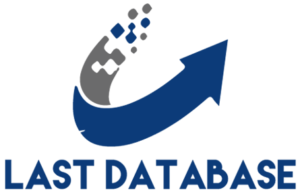Business Intelligence and Big Data are transforming the way companies use information to make strategic decisions. Every second, millions of pieces of information are generated by companies, consumers and connected devices around the world.
But, amidst this ocean of data, a big question arises: how to transform this immense amount of information into something useful and strategic for business?
This is where two fundamental concepts come in: Business Intelligence (BI) and Big Data . Both are essential for companies that want to become more data-driven , that is, make decisions based on concrete data, and not just intuition or experience.
But, despite being related, these two terms do not mean the same thing – and understanding their differences can be a great competitive advantage.
If you’ve ever wondered what the real difference is between Business Intelligence and Big Data, or if you need to decide which of these approaches makes the most sense for your business, this article is for you.
Let’s explore what each one means, their main advantages, use cases and most used tools.
In the end, you will have a clear vision of how these solutions can boost your company’s performance.
Let’s go?
What is Business Intelligence (BI)?
Business Intelligence is a set b2b marketing: why should you offer webinars? of processes, technologies and methodologies aimed at collecting, organizing and analyzing data with the aim of supporting strategic decision-making in companies. BI transforms raw data into actionable information through reports, dashboards and graphical visualizations.
BI Features:
Focuses on the analysis of a let’s do this math structured data.
Uses relational databases, data warehouses and visualization tools.
Support for operational and strategic decision-making.
Interactive reports and dashboards for historical and predictive analysis.
What is Big Data?
Big Data refers to the processing of large volumes of data that cannot be managed by traditional systems due to their complexity. The concept of Big Data is defined by the so-called “5 Vs”:
Volume : Large amount of data generated continuously.
Speed : Fast processing of belgium numbers information in real time.
Variety : Diversity of sources and formats (structured and unstructured).
Veracity : Quality and reliability of data.
Value : Generation of relevant insights for business.
Big Data is widely used in advanced analytics, artificial intelligence, and machine learning to predict trends and behaviors.
Differences between Business Intelligence and Big Data
Business Intelligence and Big Data: what’s the difference?
Although Business Intelligence and Big Data are complementary, there are significant differences between them:
Feature Business Intelligence (BI) Big Data
Data type Structured Structured and unstructured
Data volume Moderate Large scale
Analysis time Historical and predictive Real-time and deep analysis
Tools Dashboards, reports Machine Learning, Data Lakes
Objective Business decision support Discovering patterns and trends
Advantages of Business Intelligence
Greater efficiency in decision making.
Custom reports and intuitive dashboards.
Cost reduction and optimization of operational processes.
Monitoring KPIs and performance metrics in real time.






